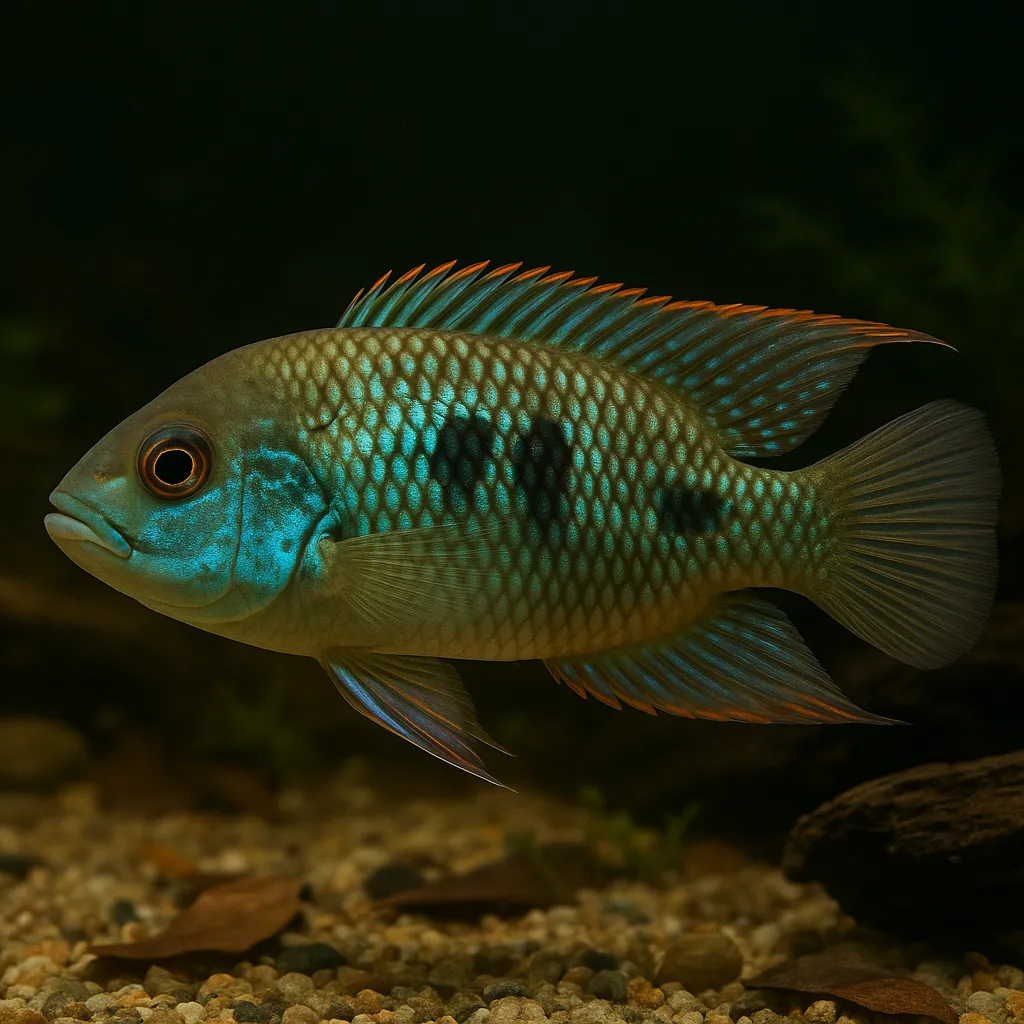
Acara cichlid
Introduction
The Blue Acara cichlid (Andinoacara pulcher) is a vibrant freshwater fish cherished by aquarists for its striking blue-green coloration and relatively peaceful demeanor. Native to South America, this species is well-suited for both beginner and intermediate fishkeepers due to its hardy nature and adaptability to various aquarium conditions. With proper care, Blue Acaras can thrive and become a captivating centerpiece in a community tank.
What makes the Blue Acara a popular choice among aquarists?
Their stunning appearance, manageable size, and compatibility with a range of tank mates make them a favored addition to many freshwater aquariums.
Are Blue Acaras suitable for beginners?
Yes, their hardy nature and adaptability make them an excellent choice for novice fishkeepers.
Care and Environment
Providing optimal care for Blue Acara cichlids involves attention to tank setup, water parameters, diet, and understanding their behavior.
What is the minimum tank size for a Blue Acara?
A minimum tank size of 150 liters (approximately 40 gallons) is recommended to provide ample space for swimming and to maintain stable water conditions. For a pair or small group, a larger tank of around 200 liters (approximately 50 gallons) is ideal.
What are the ideal water parameters for Blue Acaras?
Maintain a water temperature between 23-27°C (73.4-80.6°F), a pH range of 6.5 to 7.5, and water hardness between 5-15 dGH. Consistent water quality is crucial, so regular water changes and efficient filtration are essential.
What type of tank setup do Blue Acaras prefer?
They thrive in tanks with a sandy substrate, plenty of hiding spots created using rocks, driftwood, and hardy plants like Anubias or Java Fern. Ensure open swimming areas and moderate lighting to mimic their natural habitat.
Blue Acaras are omnivorous and should be fed a varied diet, including high-quality cichlid pellets, flakes, and occasional live or frozen foods such as brine shrimp or bloodworms. Be mindful of their tendency to dig, which can disturb delicate plants; opting for robust plant species or securing plants properly can mitigate this issue.
Origin and Habitat
Blue Acara cichlids are native to the freshwater habitats of Venezuela and Trinidad. They inhabit a variety of environments, from standing waters to flowing streams, often preferring areas with abundant vegetation and submerged structures. These conditions provide ample hiding spots and foraging opportunities, contributing to their adaptability in diverse aquatic settings.
Where are Blue Acaras found in the wild?
They are indigenous to Venezuela and Trinidad, thriving in both still and flowing freshwater bodies.
What type of environments do they prefer?
They favor habitats with abundant vegetation and submerged structures, offering plenty of hiding spots and foraging opportunities.
Temperament and Compatibility
Blue Acaras are generally peaceful compared to other cichlids but can exhibit territorial behavior, especially during breeding. They are best kept with similarly sized, non-aggressive fish. Suitable tank mates include larger tetras, rainbowfish, and other cichlids of similar temperament. It's advisable to avoid housing them with smaller or more timid species that might be intimidated or outcompeted.
Are Blue Acaras aggressive?
They are relatively peaceful but can become territorial during breeding periods.
What are suitable tank mates for Blue Acaras?
Larger tetras, rainbowfish, and similarly sized cichlids with non-aggressive temperaments make good companions.
Should Blue Acaras be kept in pairs or groups?
They can be kept singly, in pairs, or in small groups, provided the tank is spacious enough to accommodate their territorial nature.
Interesting Facts
Blue Acaras are known for their engaging behaviors, such as digging and rearranging tank decor, which can be entertaining for observers. They are monogamous and exhibit strong parental care, with both parents guarding and tending to their offspring. Additionally, their adaptability to various water conditions and relatively peaceful nature make them a popular choice among cichlid enthusiasts.
Do Blue Acaras display unique behaviors?
Yes, they are known for digging and rearranging tank decor, showcasing their active and engaging nature.
How do Blue Acaras care for their young?
They exhibit strong parental care, with both parents actively guarding and tending to their offspring.
Sources
All information in this article has been gathered from the following reputable sources:
Overview
Recommended Tank Size 52.8 Gallons (for a pair or small group) |
Minimum Group Size 1 |
Minimum Tank Volume 39.6 Gallons |
Maximum Adult Length 6.3 inches |
Average Adult Length 4.7 inches |
Shoaling (6+ required) No |
Preferred Water Type Freshwater, soft to moderately hard, slightly acidic to neutral |
Temperature Range (°C) 23-27 |
pH Range 6.5-7.5 |
Water Hardness (dGH) 5-15 |
Typical Lifespan (years) 8 years |